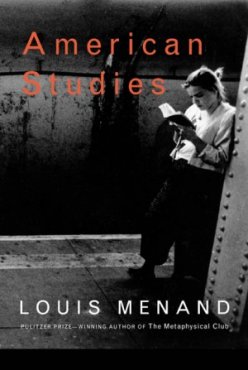

By Louis Menand
“It was miserable, ” Lin said when I first asked her about her year in Washington. “It was beyond miserable.” There is still indignation in her voice when she gets on the subject of the building of the Vietnam Veterans Memorial. She hates Washington, and has rarely been back since her work was finished. “I think it is actually a miracle that the piece ever got built, ” Lin wrote about the memorial in Boundaries. When art and politics collide, it is usually the art that gets totaled; that time, against all the odds, it didn’t.
Still, beating the odds is not the same as a miracle. For a miracle, there is no explanation, and, except for one element, the Vietnam Memorial is explicable. There was a need to honor the soldiers who had gone to Vietnam; and there was a flourishing contemporary art movement, known as land art, that supplied the formal language for the piece that Lin designed. The people who planned the memorial—the Vietnam Veterans Memorial Fund and the arts professionals it hired to run the design competition—had specified in advance many of the features for which Lin’s work is admired. They envisioned a mostly horizontal, contemplative work that did not disrupt the landscape of Constitution Gardens, the area in the Mall designated as the site. The competition guidelines stipulated that the monument “make no political statement regarding war and its conduct, ” and that it include the names of all 57, 661 Americans who died in the war. (More names have been added since.) Lin’s design was the unanimous choice of the competition jurors in part because it seemed so uncannily to fit the criteria the planners had in mind. What did seem to come out of the blue was the person behind Entry #1026 in the design competition, Maya Lin herself. Nobody had quite envisioned her.
Lin’s design was an assignment for an undergraduate class on funereal architecture, taught by F. Andrus Burr. Lin had become interested in funereal architecture during a trip to Denmark, during her junior year. (She has said that it was in Denmark that she first experienced racial prejudice: people thought she was an Eskimo.) She ended up studying in an area in the northwest corner of Copenhagen, called Nerrebro, which includes an enormous cemetery, Assistens Kirkegard. Hans Christian Andersen, Soren Kierkegaard, and other famous Danes are buried there. In the summer, people use the grounds as a park, and Lin got interested in the way the space had been integrated into the life of the city. Wherever she traveled after that, she told me, “I would always visit the cemetery.”
In the fall of 1980, the class learned about the competition for the Vietnam Memorial and decided to make it an assignment. The students agreed to meet in Washington during the Thanksgiving break to look at the site. Lin stopped on the way back from Ohio. Constitution Gardens was empty that day except for a few Frisbee players, and she says that the solution simply popped into her head: she would cut into the earth and, in effect, polish it. A scar, the memory of a wound. It may be that the Frisbee players reminded her of the Copenhagen cemetery she had studied, for her memorial is, essentially, a gravestone in a park.
When Lin returned to Yale, she modeled the piece in the dining hall, out of mashed potatoes. Her submission was a pastel drawing, with an essay explaining how people would respond to the work. She mailed the application just before the deadline, March 31, 1981. Lin learned during graduation week that her design had been chosen. She was twenty-one.
In 1981, Lin wore her hair down to her knees. She was a myopic grind so indifferent to the rest of the world that she often didn’t bother to wear her glasses in class. “I grew up in a college town in the middle of Appalachia, ” she explained, “so I’m still wearing Frye boots, and wearing my hair really long, and everyone’s thinking I’m some sixties hippie. I have no idea what that’s about. I’m not cutting my hair because I’m a good Chinese daughter. I’m wearing Frye boots because I’m a fashion disaster. And they connected me with antiwar and sixties radicals.” She was also, of course, a woman, and her parents were Asian. The veterans decided that the best move would be to get her off the stage as fast as possible and let the grownups take over. They misjudged their designer. “I’m fairly clueless, ” Lin told me; “I’m also really stubborn.”
Many issues drove the controversy that followed the selection of Lin’s design, but one was a translation problem. The arts professionals knew how to read Lin’s drawing: they would have recognized the form, the siting, and the materials as standard elements in land-art pieces. Most of the veterans, on the other hand, had never heard of Robert Smithson or Richard Serra (neither had Lin at the time, she claims, but she had surely absorbed some sense of the land-art aesthetic). They read Lin’s pastel rendering as, at best, a weird shape. “First thing I thought of”said the man who conceived the campaign to build the memorial, Jan Scruggs, “was it looked like a bat.”
Scruggs was not a man of aesthetic bent. He had been an Army rifleman in Vietnam, and was working for the Labor Department when, in 1979, he saw Michael Cimino’s The Deer Hunter and, after a night of solitary drinking, decided to devote himself to finding a way to honor Vietnam veterans. All he wanted was a memorial; he had little interest in a work of art. “Let’s put the names on the Mall and call it a day” was his philosophy. He had no problem with Lin’s design only as long as no one else did. When objections began, he was disposed to compromise.
The fiercest of the protesters was a veteran named Tom Carhart, who had been awarded two Purple Hearts. Carhart, too, had entered the design competition. He had no artistic training to speak of—he had gone to the library and checked out a book called Anyone Can Sculpt—but he believed that only a veteran could know what would constitute a proper memorial for veterans. He referred to Lin’s wall as an “open urinal, ” and he is supposed to have suggested, for an inscription, the words “Designed by a gook.” In an oped piece in the Times, he described Lin’s memorial as “a black gash of shame.” He rallied a number of supporters. The National Review referred to Lin’s design as “Orwellian glop.” Tom Wolfe and Phyllis Schlafly called it “a monument to Jane Fonda.” Ross Perot said that it was “something for New York intellectuals.”
RELATED VIDEO











